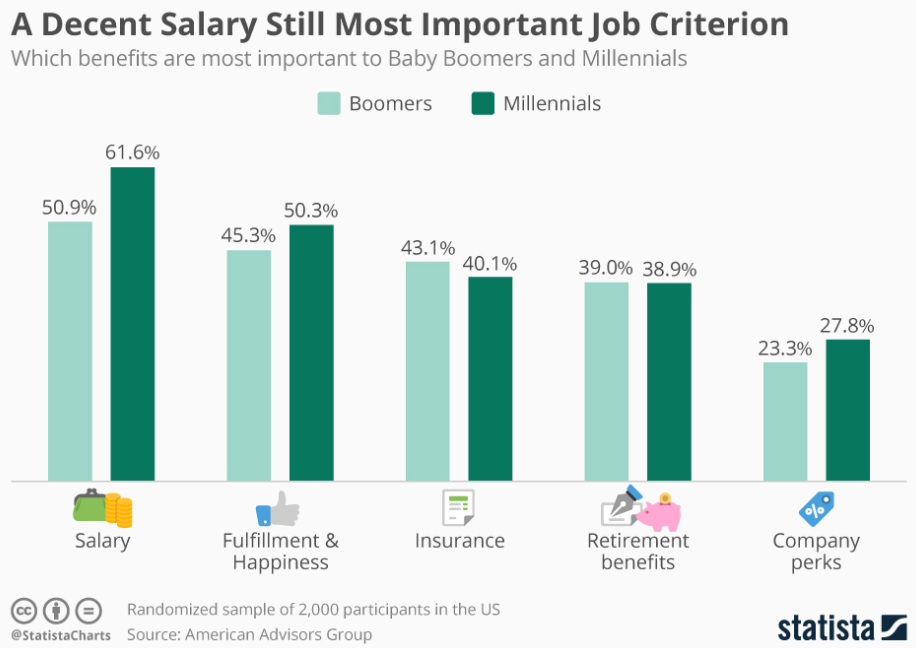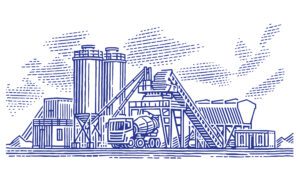This is Why Manufacturing Needs to Prioritize the Recruitment of Young Talent
A version of this article was originally published in the World Economic Forum.
In 10 years, there could be a global human talent shortage of 85 million people, according to worldwide consulting firm Korn Ferry. With manufacturing jobs alone accounting for 22% of global employment, the predicted shortage will likely have a much stronger impact in this sector than elsewhere.
It is easy to point to a fundamental shift in in-demand skill sets as a leading cause of a wider talent gap, but it is not the only factor perpetuating the problem, particularly in the industrial world.
In the coming decade, jobs in the industrial world may ironically be some of the most sought after; we just need to highlight the exciting opportunities ahead.
The challenge of the modern jobs market for industrial companies
Industrial companies face several unique factors that make closing the talent gap more difficult than for other sectors. Most prominent is a rapidly retiring workforce; in the United States alone, more than 2.6 million Baby Boomers are expected to retire from manufacturing jobs by 2030. Alongside this there is a general misperception about the industry that’s shrinking the pipeline of future workers (out of seven industries, manufacturing ranks second to last as a career choice). Finally, there is a growing threat of employee turnover due to the different workplace expectations of Millennials and Generation Z.
Fortuitously, modern industrial software – initially developed to help organizations increase profitability and output – has the dual benefit of being able to tackle these talent gap issues. Specifically, it captures knowledge of retiring workers, provides the draw that will attract skilled, younger talent to manufacturing and accelerates “time to competency” for all workers.
Capturing tribal knowledge from a retiring, experienced generation
Baby Boomers power some of the oldest industries in the world. With their retirement, the industrial world is about to lose a huge amount of knowledge in a short space of time, putting it at greater risk of a looming talent shortage than most other sectors.
Through the aid of modern technology, however, organizations can now capture and record tacit expert knowledge, which will make retirement transitions more seamless and less painful.
As a basic first step, technology can move paper-based or memorized work instructions and standard operating procedures – the bulk of the knowledge drain – to digitized, mobile- and multimedia-friendly formats. Work procedures also can be centrally administered and dynamically pushed out to locations, propagating best practices across locations.
These systems not only capture deep, often hidden operational insights and knowledge, but also ensure that work is being carried out correctly, effectively and efficiently – three areas that would otherwise suffer with the loss of veteran expertise.
Making industrial work “cool” for digital-first talent
The second issue is a general misperception about the nature of industrial, front-line work. Many people, especially Generation Z, see it as old, tried-and-true and conventional, making it harder for industrial companies to compete for young talent who are often looking for a flashy job in a new or cutting-edge industry as well as in a primary market city.
The majority of Generation Z and Millennials only know a digital-first, mobile-first world. Stepping into an industry that seemingly lacks the technological innovation to do interesting, meaningful work and help employees thrive in their roles – whether that perception is true or not – is simply not attractive.

To counter this, companies must prove that they are, indeed, the opposite. Technology can significantly reduce the tedious administrative work associated with “old school” industries by digitizing and automating certain processes. By tracking and accounting for all the moving parts and processes on a plant floor, technology also can continuously capture data and glean insights to improve productivity, quality and safety.
Additionally, connected worker technology can transform team collaboration in industrial environments where walkie-talkies and wired telephone lines remain prevalent. By giving employees the ability to instant message, video conference or send multimedia assets to managers and other workers and teams, the overall work experience for a younger employee – and operational efficiency in general – can be vastly improved.
Softening the learning curve and improving retention in a job-hopping culture
A third challenge is the reality of job-hopping. Where it was once normal to commit to a company for several decades, today’s younger generations are less likely to stay put. Organizations must address employee turnover head-on by bringing more efficiencies to their onboarding processes and driving “time to competency”.
Many new employees have little or no prior experience in the industry, let alone the specific equipment or processes in use. These new hands depend on the work instructions with which they’re provided. As such, those instructions need to be clear enough to be read and comprehended in the few moments a worker has before joining the rest of the team on the floor. For example, line speeds in consumer packaged goods manufacturing can range from tens to hundreds of units per minute, so workers have little room for “learning on the fly”, in turn making safety the primary concern.
Technology accounts for that by literally guiding employees, step-by-step and with mandatory evidence, to take precautionary actions and avoid hazards. For example, digital procedures can be set up where workers must validate that they are wearing the proper personal protective equipment before they can access the work order.
Aside from job guidance, connected worker technology can also help managers coach talent. Work execution data can provide new insights into employee work performance, identifying areas of success and improvement. Furthermore, if a worker has discovered a way to improve a certain procedure or workflow, these best practices can be quickly brought to attention and disseminated throughout operations – and give management a reason to recognize the employee for a job well done.
Generation Z and Millennials will only become more vital to the success of the industrial sector. Industrial organizations must treat recruitment and retention of younger talent as a strategic business priority in 2020 and beyond.






